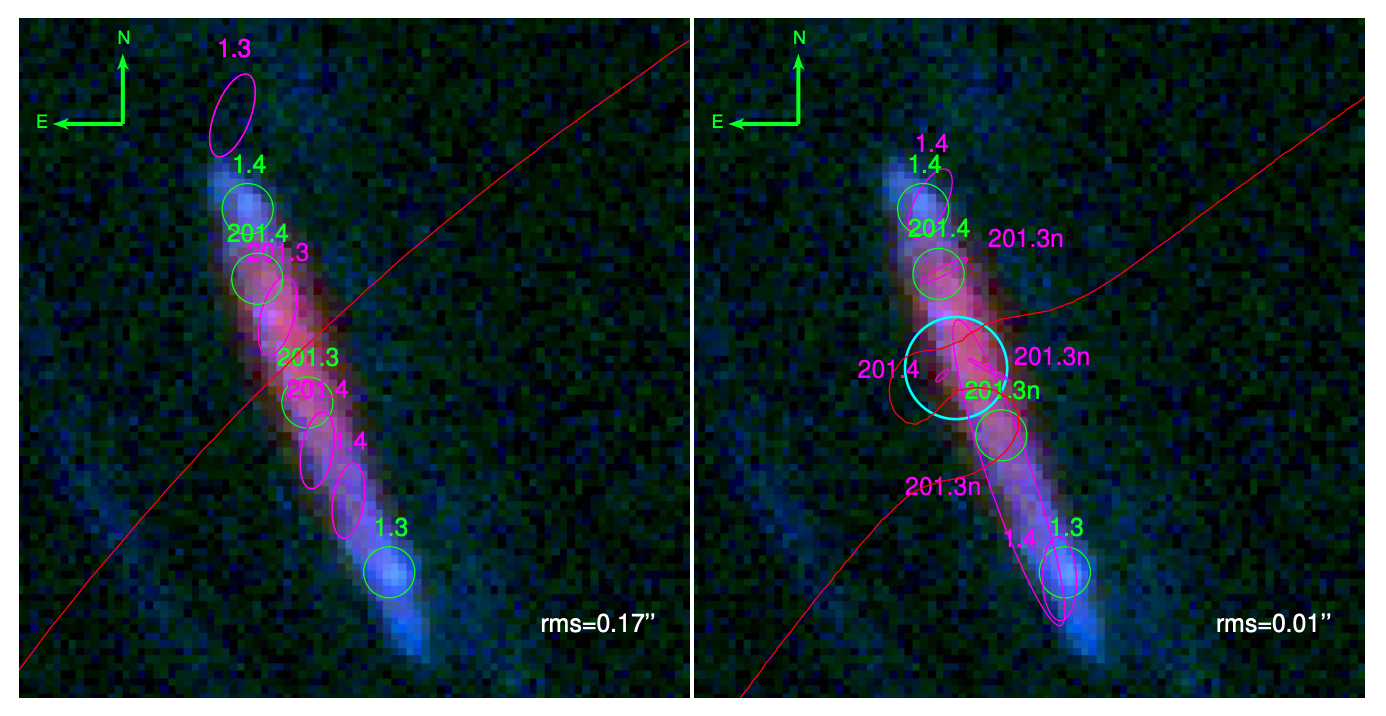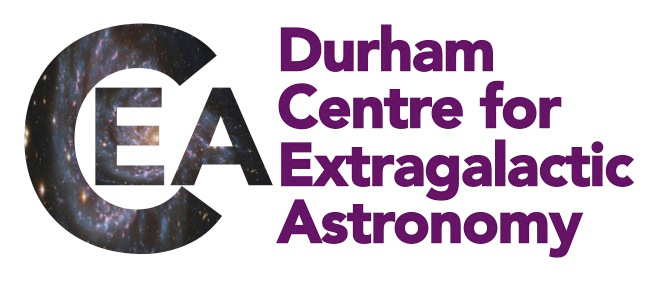CEA News, January 2023
Gravitational lensing effects of supermassive black holes in cluster environments
This study explores the gravitational lensing effects of supermassive black holes (SMBHs) in galaxy clusters. While the presence of central SMBHs in galaxies is firmly established, recent work from high-resolution simulations predict the existence of an additional population of wandering SMBHs.
 Figure 10 in the paper, . Left: Original model; The lensing configurations is
classically described as a merging pair, the critical curve (red curve) is passing
through the centrally located red part of the system but the two extreme emission knots
are not symmetrically located on each side of the critical curve as expected. Right:
Alternative modelling including a SMBH at the location of the critical curve alleviate this tension.
Figure 10 in the paper, . Left: Original model; The lensing configurations is
classically described as a merging pair, the critical curve (red curve) is passing
through the centrally located red part of the system but the two extreme emission knots
are not symmetrically located on each side of the critical curve as expected. Right:
Alternative modelling including a SMBH at the location of the critical curve alleviate this tension.
Though the masses of these SMBHs are a minor perturbation on the larger scale and individual galaxy scale dark matter components in the cluster, they can impact statistical lensing properties and individual lensed image configurations. Probing for these potentially observable signatures, the authors find that SMBHs imprint detectable signatures in rare, higher order strong lensing image configurations although they do not manifest any statistically significant detectable evidence in either the magnification distribution or the integrated shear profile. Investigating specific lensed image geometries, they report that a massive, near point-like, potential of an SMBH causes the following detectable effects: (i) image splitting leading to the generation of extra images; (ii) positional and magnification asymmetries in multiply imaged systems; and (iii) the apparent disappearance of a lensed counter image. Of these, image splitting inside the cluster tangential critical curve, is the most prevalent notable observational signature. They demonstrate these possibilities in two cases of observed giant arcs in SGAS J003341.5+024217 and RX J1347.5-1145, wherein specific image configurations seen can be reproduced with SMBHs. Future observations with high-resolution instrumentation (e.g. MAVIS-Very Large Telescope, MICADO-Extremely Large Telescope, and the upgraded ngVLA, along with data from the Euclid and Nancy Grace Roman Space Telescopes and the Rubin LSST Observatory are likely to allow us to probe these unique yet rare SMBHs lensing signatures.

